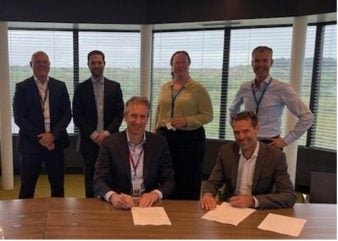
Curium has signed a long-term agreement to extend its current partnership with NRG I PALLAS for new irradiation services in Petten in the Netherlands to produce non-carrier added lutetium-177 (Lu-177).
With manufacturing facilities across Europe and the United States, Curium delivers Single Photon Emission Computed Tomography (SPECT), Positron Emission Tomography (PET) and therapeutic radiopharmaceutical solutions for life-threatening diseases to over 14m patients annually.
At NRG I PALLAS, the High Flux Reactor (HFR) produces medical isotopes used to diagnose and treat life-threatening diseases. As a replacement for the ageing HFR, the PALLAS-reactor will play a crucial role in the supply chain for radiopharmaceuticals worldwide.
Curium’s Lu-177 production facility and NRG’s HFR reactor are both located on the Energy & Health Campus in Petten. To support its Lu-177 product platform to expand the delivery of this medical isotope, Curium has installed several Lu-177 production lines at its facilities in Petten, which started production in early 2024
Bertholt Leeftink, CEO NRG I PALLAS added, “Curium and NRG I PALLAS have been irradiation partners to produce important medical isotopes since 1995. This announcement to extend our partnership ensures a continuous supply of Lu-177 for patients, and as well supports Curium’s Lu-177 patient therapy innovation pipeline for patients.”
The HFR reactor has been a key source of access to molybdenum-99 (Mo-99) over more than 40 years, and more recently for Lu-177. By accessing capacity at HFR for Lu-177, Curium will be able to meet patient demand throughout most of the year at high capacity and importantly will address the growing need for Lu-177 products used for cancer patients.
Ciril Faia, CEO SPECT Europe for Curium commented said the agreement complements Curium’s existing global irradiation partnerships and ongoing dialogues with reactors elsewhere in the world. “Lu-177 already is a game changer for patients in NETs [neuroendocrine tumours] and prostate cancer – and could become life-saving for an additional 20 indications in the long-term based on products currently in (pre)clinical trials/ being developed.”






